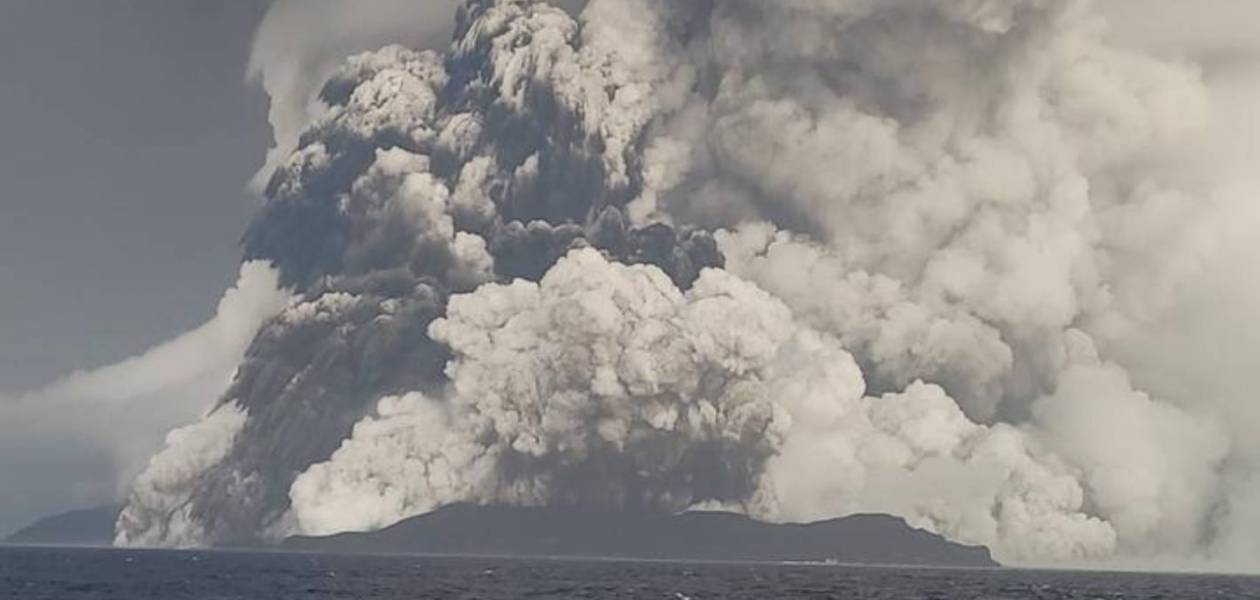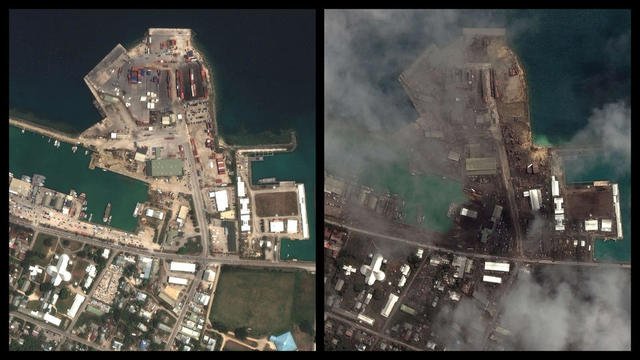
The eruption of the Hunga Tonga-Hunga Ha'apai volcano on an uninhabited island in the South Pacific, about 65 kilometers from Nuku'alofa, the capital of the archipelago has cut off the Tonga islands from the rest of the world. This archipelago, which has only 100,000 inhabitants, will certainly have to face a difficult situation which should last. Telephone and Internet connections were rendered impossible following the rupture of a cable essential for communications. It will take at least a month to repair it, the New Zealand Ministry of Foreign Affairs said on Wednesday, January 18, based on information from the “ American cable company SubCom”.
"From what little information we have, the scale of devastation could be immense, especially for the most isolated islands ," Katie Greenwood, of the International Federation of Red Cross Societies, said earlier. .
In addition, beyond the humanitarian disaster, an ecological disaster is looming. The eruption volcanic underwater mass of Tonga could cause lasting damage to coral reefs, erode coasts and disrupt fisheries, say scientists studying satellite images and look to the past to project the future from the remote area.
 [© 2022 Maxar Technologies / AFP]
[© 2022 Maxar Technologies / AFP]
Since the initial eruption, the volcano has released sulfur dioxide and nitrogen oxide – two gases that create acid rain when they interact with water and oxygen in the atmosphere.
With the tropical climate of Tonga, "there will probably be acid rain around Tonga for some time to come," said volcanologist Shane Cronin of the University of Auckland.
Acid rain is causing extensive damage to crops and could ruin Tongan staples like taro, maize, bananas and garden vegetables. “Depending on the duration of the eruptions, food security could be compromised,” added Shane Cronin.
Satellite imagery shows the plume of smoke and ash spreading westward, meaning Tonga could be spared some of this acid rain. This is not the case for the Fiji Islands which are on the trajectory.
In a bulletin released on Monday, the UN humanitarian affairs office said Fiji was monitoring air quality and had advised people to cover their household water tanks and stay indoors in case radar.
What about the economic sector that will also be hard hit? Tonga's exclusive economic zone, which has nearly 700,000 marine square kilometres, is 1,000 times larger than its land area. And most Tongans get their food – and their livelihoods – from the ocean.

While scientists have yet to investigate the ground, "the few available images appear to show a blanket of ash" on land, according to statements by Marco Brenna, a geologist at the University of Otago in New Zealand. Indeed, new satellite images, published Tuesday January 18 by Maxar Technologies, showed devastated islands, with whole sections of the archipelago covered in ash and dust or ravaged by a tsunami.
In the ocean, these ashes can be harmful to marine life. Weeks before Saturday's eruption, the Geological Survey of Tonga warned that nearby seawater was contaminated with toxic volcanic discharge and that anglers should "assume that fish in these waters are poisonous or toxic". Inevitably, the eruption made the situation worse. The cloudy, ash-filled water near the volcano will starve fish and wipe out spawning grounds.
Some fish will perish and survivors will be forced to migrate, scientists have said. New changes in the structure of the seabed could create new obstacles for fishing vessels. "It will take some time before the same fishing grounds and new fishing areas are restored," said Brenna.
The ash fall can also smother the coral reefs, which in Tonga are the backbone of the tourism industry which reported up to 5 million per year before the pandemic coronavirus. Even before the eruption, the reefs of Tonga were threatened by epidemics and climate change impacts, including coral bleaching and hurricanes more powerful.
Now, "large areas of reefs in the immediate impact area in Hunga Tonga are likely buried and smothered by large deposits of volcanic ash," said Tom Schils, a marine biologist at the University of Guam who has studied the volcanic eruptions and corals in the Northern Mariana Islands.
Such eruptions also release more iron into the water, which can stimulate the growth of blue-green algae and sponges that further degrade reefs.
Reefs may have to start from scratch — a process that could take years, said Brian Zgliczynski, coral reef ecologist at the Scripps Institution of Oceanography. "The species more tolerant to poor water quality will perhaps come out first," while hard corals and fish will take longer to return, he said.
This natural disaster is also a bad omen and a source of additional threats for the already fragile coastal areas. Indeed, a loss of coral reefs would also affect Tonga's ability to cope with rising seas and storm surges. It's a concern for Tonga, where climate change is causing sea levels to rise by about 6 millimeters (0.2 inches) a year, twice the global average. In a 2015 report, Tonga valued its natural storm buffers, including coral reefs as well as coastal seagrasses and mangroves, at around $11 million per year.
With the latest eruption, a Tongan sea level gauge recorded a 1.19 meter (nearly four foot) tsunami wave and then stopped reporting. Tsunamis are known to cause rapid coastal erosion. And before communications systems failed, videos revealed damage to man-made dikes. “Coastal defenses and reclaimed land could all be heavily impacted by tsunami waves, leaving the islands even more vulnerable,” said Shane Cronin.
Posted on 2022-01-19 10:15








Comments